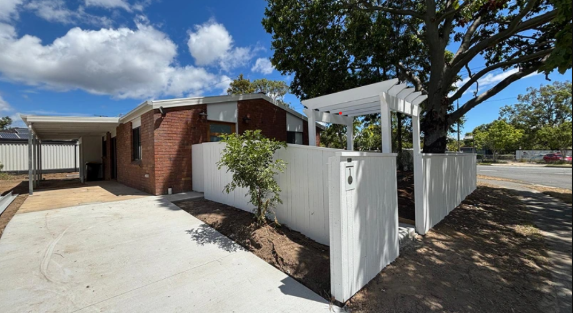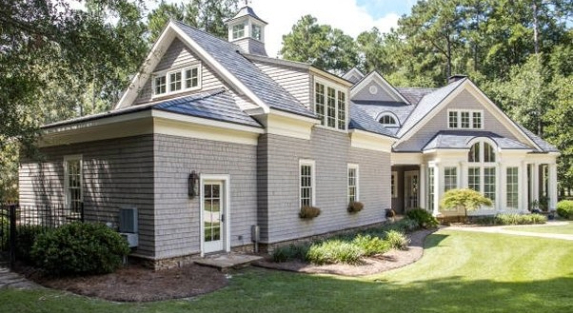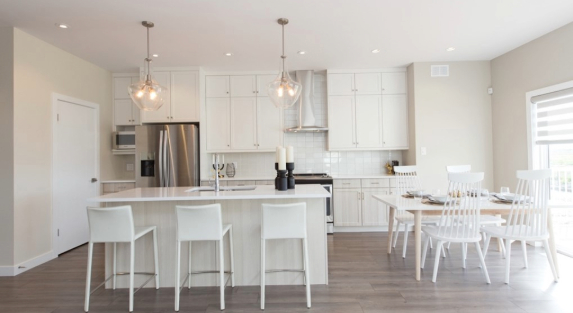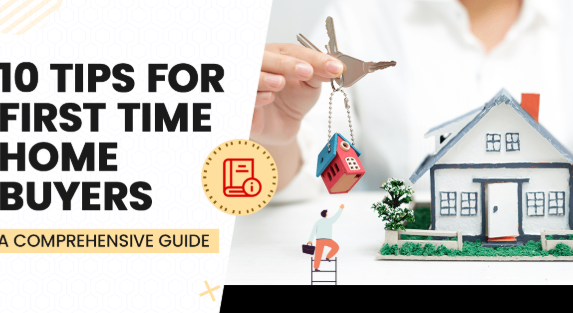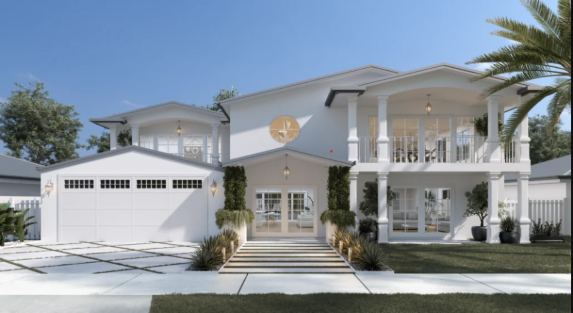Introduction
The design and construct industry is undergoing a transformative phase, driven by technological advancements, evolving consumer preferences, and a growing emphasis on sustainability. Design and construct services, which encompass the integration of design and construction processes, are at the forefront of this evolution. This article explores the top 10 design and construct trends to watch, highlighting how these trends are shaping the future of the industry. By understanding these trends, stakeholders can leverage design and construct services to create innovative, sustainable, and efficient built environments.
1. Sustainable Design and Construction
The Rise of Green Building Practices
Sustainable design and construction have become paramount in the design and construct industry. Green building practices aim to minimize environmental impact, reduce energy consumption, and promote resource efficiency. Design and construct services are increasingly incorporating sustainable materials, energy-efficient systems, and eco-friendly construction methods.
Key Elements of Sustainable Design and Construction
- Energy Efficiency: Implementing energy-efficient systems, such as solar panels, LED lighting, and smart thermostats, to reduce energy consumption.
- Water Conservation: Utilizing water-efficient fixtures, rainwater harvesting systems, and drought-tolerant landscaping to conserve water.
- Sustainable Materials: Using eco-friendly materials, such as recycled steel, reclaimed wood, and low-VOC paints, to reduce environmental impact.
- Waste Reduction: Adopting construction waste management practices to minimize waste and promote recycling.
2. Modular and Prefabricated Construction
The Shift Towards Off-Site Construction
Modular and prefabricated construction involve the off-site manufacturing of building components, which are then assembled on-site. This method offers numerous advantages, including reduced construction time, improved quality control, and minimized waste. Design and construct services are increasingly adopting modular and prefabricated construction techniques to enhance efficiency and sustainability.
Key Benefits of Modular and Prefabricated Construction
- Speed: Faster construction timelines due to simultaneous site preparation and module fabrication.
- Quality: Improved quality control through factory-controlled environments.
- Cost-Effectiveness: Reduced labor and material costs due to efficient production processes.
- Sustainability: Minimized construction waste and reduced environmental impact.
3. Smart Buildings and IoT Integration
The Emergence of Smart Buildings
Smart buildings leverage Internet of Things (IoT) technology to enhance building performance, occupant comfort, and energy efficiency. Design and construct services are integrating IoT devices, sensors, and automation systems to create intelligent and connected buildings.
Key Features of Smart Buildings
- Building Automation: Automated systems for lighting, HVAC, and security to optimize energy use and improve comfort.
- Occupant Experience: Personalized environments through smart devices and mobile apps.
- Data Analytics: Real-time data collection and analysis to monitor building performance and inform decision-making.
- Energy Management: Smart energy systems to reduce consumption and lower utility costs.
4. Biophilic Design
The Connection Between Nature and Built Environments
Biophilic design emphasizes the integration of natural elements into built environments to enhance occupant well-being and connection to nature. Design and construct services are incorporating biophilic design principles to create healthier and more inspiring spaces.
Key Elements of Biophilic Design
- Natural Light: Maximizing natural light through large windows, skylights, and open floor plans.
- Green Spaces: Incorporating indoor plants, green walls, and rooftop gardens.
- Natural Materials: Using materials such as wood, stone, and natural fibers to create a connection to nature.
- Water Features: Integrating water elements, such as fountains and indoor ponds, to enhance tranquility.
5. Resilient Design
Building for a Changing Climate
Resilient design focuses on creating buildings and infrastructure that can withstand and adapt to environmental challenges, such as extreme weather events and climate change. Design and construct services are prioritizing resilient design to ensure the longevity and safety of built environments.
Key Principles of Resilient Design
- Durability: Using robust materials and construction techniques to withstand extreme conditions.
- Adaptability: Designing flexible spaces that can be easily modified to meet changing needs.
- Redundancy: Incorporating backup systems, such as alternative power sources and water supplies, to ensure functionality during disruptions.
- Community Resilience: Designing buildings and infrastructure that support community resilience and disaster recovery.
6. Adaptive Reuse and Renovation
Transforming Existing Structures
Adaptive reuse and renovation involve repurposing existing buildings for new uses, preserving historical and cultural heritage while meeting modern needs. Design and construct services are increasingly focusing on adaptive reuse to reduce waste, conserve resources, and revitalize communities.
Key Benefits of Adaptive Reuse and Renovation
- Sustainability: Reducing the environmental impact by reusing existing structures and materials.
- Cost-Effectiveness: Lower construction costs compared to new builds.
- Cultural Preservation: Preserving historical and cultural heritage through the adaptive reuse of historic buildings.
- Community Revitalization: Transforming underutilized buildings into vibrant community spaces.
7. Wellness-Centric Design
Prioritizing Occupant Health and Well-Being
Wellness-centric design focuses on creating spaces that promote physical, mental, and emotional well-being. Design and construct services are incorporating wellness principles to enhance occupant health, productivity, and satisfaction.
Key Elements of Wellness-Centric Design
- Indoor Air Quality: Using low-VOC materials, advanced ventilation systems, and air purifiers to ensure clean and healthy indoor air.
- Natural Light: Maximizing natural light to improve mood and reduce eye strain.
- Acoustic Comfort: Incorporating soundproofing materials and design elements to reduce noise and enhance tranquility.
- Ergonomic Design: Designing spaces and furniture to support physical comfort and reduce strain.
8. Advanced Building Materials
Innovations in Construction Materials
Advanced building materials are revolutionizing the design and construct industry by offering enhanced performance, durability, and sustainability. Design and construct services are leveraging these materials to create innovative and resilient buildings.
Key Innovations in Building Materials
- Self-Healing Concrete: Concrete that can repair its own cracks, extending the lifespan of structures.
- Cross-Laminated Timber (CLT): A sustainable and strong alternative to traditional building materials, offering excellent structural performance and aesthetic appeal.
- Smart Glass: Glass that can change its transparency to control light and heat, improving energy efficiency and occupant comfort.
- Aerogel Insulation: A highly effective insulation material that offers superior thermal performance and reduces energy consumption.
9. Virtual and Augmented Reality in Design and Construction
Enhancing Design Visualization and Collaboration
Virtual reality (VR) and augmented reality (AR) are transforming the design and construct industry by enabling immersive visualization and enhanced collaboration. Design and construct services are leveraging VR and AR to improve design accuracy, reduce errors, and enhance client engagement.
Key Applications of VR and AR in Design and Construction
- Design Visualization: Creating immersive 3D models that allow clients and stakeholders to experience designs before construction.
- Collaboration: Facilitating real-time collaboration between designers, contractors, and clients through virtual meetings and shared VR/AR environments.
- Training and Safety: Using VR/AR for construction training and safety simulations to reduce risks and improve worker preparedness.
- Project Management: Enhancing project management through AR overlays that provide real-time information and updates on construction progress.
10. Collaborative Project Delivery Methods
The Shift Towards Integrated Project Delivery
Collaborative project delivery methods, such as Integrated Project Delivery (IPD) and Design-Build, emphasize teamwork, communication, and shared risk among project stakeholders. Design and construct services are adopting these methods to improve project outcomes, reduce costs, and enhance efficiency.
Key Benefits of Collaborative Project Delivery Methods
- Improved Communication: Enhanced communication and collaboration among stakeholders, leading to better decision-making and problem-solving.
- Risk Sharing: Shared risk and accountability among project participants, reducing the likelihood of disputes and delays.
- Cost Savings: Reduced costs through efficient project management and minimized rework.
- Faster Delivery: Accelerated project timelines due to streamlined processes and coordinated efforts.
Conclusion
The design and construct industry is evolving rapidly, driven by technological advancements, sustainability goals, and changing consumer preferences. Design and construct services are at the forefront of this transformation, leveraging innovative trends to create efficient, sustainable, and resilient built environments.
From sustainable design and modular construction to smart buildings and biophilic design, these trends are shaping the future of the industry. By embracing these trends, stakeholders can enhance the value, functionality, and appeal of their projects, ensuring long-term success in a competitive market.
As the demand for innovative and sustainable design and construct services continues to grow, the industry must remain adaptable and forward-thinking. By staying informed about emerging trends and leveraging advanced technologies, design and construct professionals can create spaces that not only meet the needs of today but also contribute to a more sustainable and resilient future.


